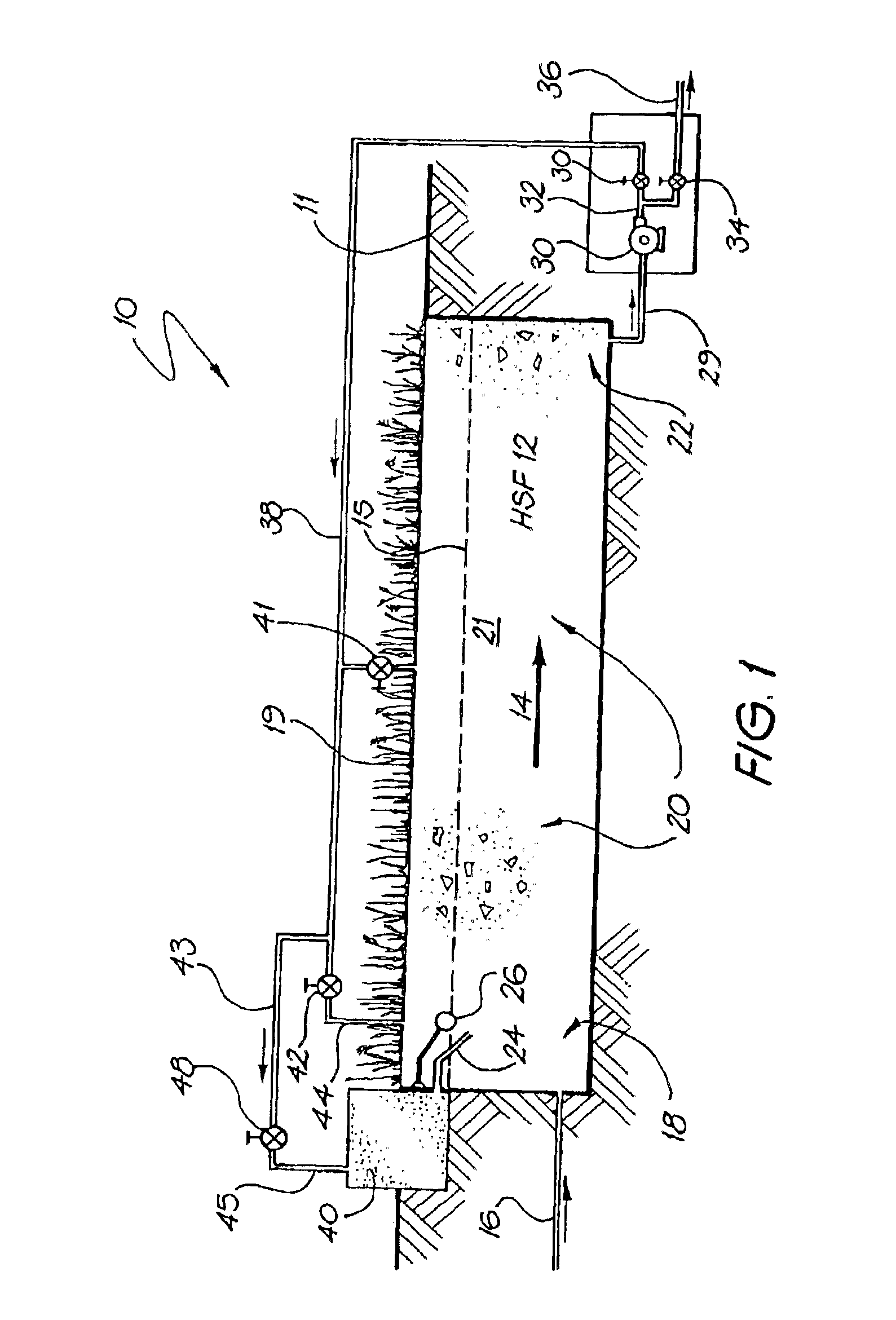Polluted water treatment system
a water treatment system and polluted water technology, applied in the direction of water cleaning, water treatment parameter control, feed/outtake of settling tanks, etc., can solve the problems of low filter effect, non-uniform loading of filters, and low efficiency in nitrogen removal, so as to reduce impurities of polluted water and control the level of inflow polluted water
- Summary
- Abstract
- Description
- Claims
- Application Information
AI Technical Summary
Benefits of technology
Problems solved by technology
Method used
Image
Examples
Embodiment Construction
A preferred embodiment of a sewage waste water treatment system will now described with reference to FIGS. 1 and 2. This embodiment is not claimed. A waste water treatment system is operated to reduce impurities in sewerage waste water to an acceptable level for dumping. The system includes a horizontal subsurface filter (HSF) bed having an inlet zone through which the inflow of waste water is permitted to pass, a treatment zone which permits the waste water to undergo treatment by removal of at least some of the impurities of the polluted water and an outlet zone from which the treated waste water flows from the HSF bed and a collection well from which the treated waste water can be redirected.
The impurities may include, for example, organic materials (BOD and COD) and nutrients such as nitrogen and phosphorus. The collection well has a pump located therein to recycle the treated effluent back to either the inlet zone or the treatment zone of the HSF or to a secondary vertical filt...
PUM
| Property | Measurement | Unit |
|---|---|---|
| depths | aaaaa | aaaaa |
| flow rate | aaaaa | aaaaa |
| flow rate | aaaaa | aaaaa |
Abstract
Description
Claims
Application Information
 Login to View More
Login to View More - R&D
- Intellectual Property
- Life Sciences
- Materials
- Tech Scout
- Unparalleled Data Quality
- Higher Quality Content
- 60% Fewer Hallucinations
Browse by: Latest US Patents, China's latest patents, Technical Efficacy Thesaurus, Application Domain, Technology Topic, Popular Technical Reports.
© 2025 PatSnap. All rights reserved.Legal|Privacy policy|Modern Slavery Act Transparency Statement|Sitemap|About US| Contact US: help@patsnap.com



